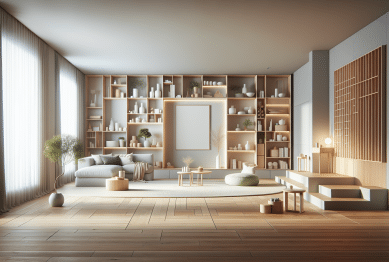In a world obsessed with productivity, the concept of “resting to create” is gaining momentum. Emerging research and workplace trends are shining a spotlight on the link between creativity and rest, challenging the outdated belief that nonstop work equals better output. Instead, rest is now seen as a powerful catalyst for innovation, clarity, and problem-solving.
As industries grapple with burnout and digital fatigue, understanding the connection between rest and creative thinking has never been more relevant. This article will explore why strategic rest is essential for creativity, current trends embracing this philosophy, and actionable strategies for individuals and organizations.

The Neuroscience Behind the Link Between Creativity and Rest
Creativity doesn’t solely emerge from relentless concentration. According to neuroscientists, the brain’s Default Mode Network (DMN) is most active when we are at rest or in a relaxed state. The DMN plays a crucial role in daydreaming, imagination, and the integration of complex ideas.
A 2023 study published in Frontiers in Psychology found that individuals who took short, mindful breaks throughout the day exhibited a 25% increase in divergent thinking, a core component of creativity. Rest activates brain regions responsible for subconscious processing, allowing novel connections to surface.
Furthermore, cognitive neuroscientist Dr. Moshe Bar emphasizes that downtime facilitates associative thinking, which is essential for generating fresh ideas and innovative solutions.
The Cultural Shift: Rest as a Creative Strategy
Leading organizations and creative professionals are no longer treating rest as an optional luxury but as a strategic tool for enhancing output quality.
Key Trends:
- Intentional Rest Periods in Workflows: Companies like Atlassian and Adobe are scheduling ‘thinking time’ into employee calendars, where no meetings or tasks are assigned.
- Rest-First Creative Sprints: Creative agencies are experimenting with workflows where ideation is deliberately preceded by rest sessions to encourage better brainstorming.
- The 4-Day Workweek Movement: Trials in countries like the UK and Japan are showing that reduced workdays can lead to higher creativity and productivity, not less.
These shifts reflect a growing acknowledgment of the link between creativity and rest in achieving sustainable, high-quality output.
How Rest Enhances Creative Problem Solving
1. Mental Space for Incubation
Creative breakthroughs often happen when you’re not actively working on a problem. Rest gives your subconscious mind time to process and reorganize information, leading to unexpected insights.
2. Reducing Cognitive Overload
Constant cognitive effort taxes the prefrontal cortex, which is essential for executive functions like planning and decision-making. Rest alleviates this load, refreshing mental resources needed for complex tasks.
3. Promoting Emotional Regulation
Rest helps stabilize mood and reduce stress, both of which are crucial for maintaining an open and exploratory mindset, key traits for creative thinking.
4. Enhancing Perspective Shifts
Physical and mental detachment from work encourages psychological distance, which has been linked to improved perspective-taking and problem re-framing, essential for innovative solutions.
Practical Guide: Leveraging Rest to Boost Creativity
Resting with intention requires a mindful approach. Here are practical strategies to harness the link between creativity and rest:
1. Schedule “Creative Rest Blocks”
- Allocate 15-30 minute periods during your day specifically for passive rest activities (e.g., walking, light stretching, looking out a window).
- Protect these blocks as fiercely as meetings or work sessions.
2. Engage in Non-Goal-Oriented Activities
- Activities like casual reading, light doodling, or listening to instrumental music allow the mind to wander productively.
- The goal is not to achieve something but to give your brain space to breathe.
3. Practice Controlled Daydreaming
- Set aside 10 minutes to simply sit in a relaxed state and let your thoughts flow freely.
- Research from Scientific American highlights that daydreaming is a fertile ground for creative associations.
4. Implement Technology-Free Time
- Digital inputs can overwhelm the brain’s processing capacity.
- Schedule daily intervals where you completely disconnect from screens to foster mental clarity.
5. Prioritize Quality Sleep
- Sleep is a non-negotiable form of rest that directly impacts cognitive flexibility and creative reasoning.
- A study from the Journal of Sleep Research (2022) found that REM sleep enhances the ability to solve complex problems creatively.
Real-World Success Stories: Rest-Driven Creativity
- Google’s ‘20% Time’ Policy: Allowing employees to spend a portion of their workweek on unstructured projects has birthed innovations like Gmail and Google Maps.
- The Icelandic Workweek Experiment: A trial of a 35-hour workweek in Iceland saw no drop in productivity and reported increased worker well-being and creativity.
- Famous Creatives: Writers like Ernest Hemingway and artists like Salvador Dalí intentionally used rest periods and daydreaming as part of their creative process.
Overcoming the ‘Guilt of Rest’
One of the main barriers to embracing rest as a creative tool is the ingrained cultural guilt associated with “doing nothing.” However, re-framing rest as an active component of productive work is key.
Organizations can support this shift by:
- Educating teams on the science of creativity and rest.
- Leading by example—managers taking and encouraging breaks.
- Embedding rest-friendly practices into daily workflows (e.g., no-meeting blocks, meditation rooms).
For individuals, it involves giving yourself permission to pause without equating it to laziness. Remember, rest is not a reward; it’s part of the creative process.
The Future of Creativity: Rest-Driven Innovation
As remote work blurs boundaries between professional and personal life, the risk of constant cognitive fatigue rises. Yet, this challenge also presents an opportunity. By systematically integrating rest into our routines, we can foster a culture where creativity thrives sustainably.
Emerging technologies like focus-tracking wearables and AI-driven break reminders are making it easier to personalize rest strategies. Additionally, forward-thinking organizations are moving towards outcome-based performance models, where the quality of output is valued over the sheer number of hours logged.
In this evolving landscape, understanding and harnessing the link between creativity and rest will become a competitive advantage for both individuals and businesses.
References
- Frontiers in Psychology. (2023). Rest and Creative Performance: The Role of Mindful Pauses. https://www.frontiersin.org/journals/psychology
- Scientific American. (2023). The Benefits of Daydreaming for Creativity. https://www.scientificamerican.com
- Journal of Sleep Research. (2022). REM Sleep and Problem-Solving Creativity. https://onlinelibrary.wiley.com/journal/13652869









